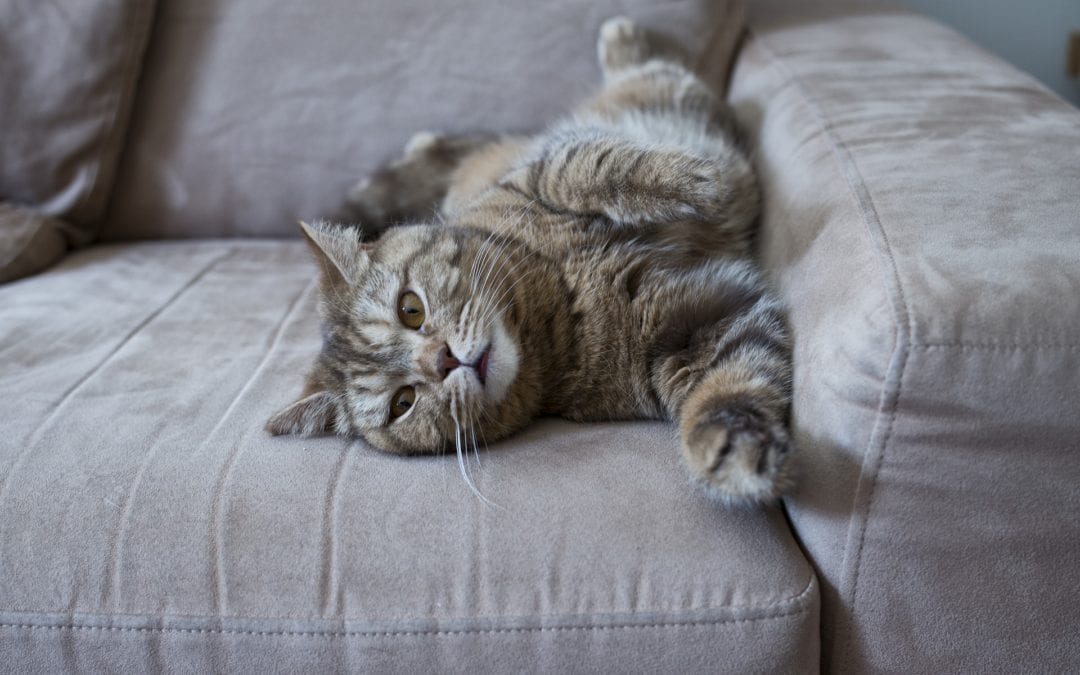By implementing some simple solutions to provide an outlet for your cat’s scratching, you can ensure your cat gets to practice this normal behavior without ruining your furniture in the process!
Why Cats Scratch
To remove dead nail:
Cats typically scratch on vertical surfaces to remove old, often-frayed outer layers of nails and expose new nail growth underneath.
For exercise/stretching:
Scratching also stretches and flexes many of the cat’s muscles and tendons and may serve as an important form of exercise for her—many cats scratch after waking and stretching or as a part of a stretching sequence.
To mark objects:
Cats often return repeatedly to a spot they have scratched, leaving behind chemical marks when they do. The exact significance of these marks is unclear, but some believe they provide reassurance to the cat when she returns to investigate the mark.
They are excited:
Cats may also run to scratch a favorite surface when they become excited or aroused, such as during play.
What to do About Inappropriate Scratching
- There are two important steps for treating or preventing this unwanted behavior:
- Prevent access to the area of unwanted scratching or make it unappealing somehow.
- Make it attractive for the cat to scratch in a different, non-furniture location
Prevent access to inappropriate items being scratched
The more times the cat rehearses scratching an inappropriate object (such as a couch), the more difficult it will be to get her to stop. So, it’s important to prevent access to those items as best you can while the cat is learning what you would like her to scratch instead. Here are some tips:
- Confine young kittens to one room initially.
- Spray a product such as Feliway Classic® on the area that is being targeted. This scent leaves a message to the cat that essentially says, “you have already marked this area, no need to mark again,” so it may help decrease the cat’s interest in scratching on the treated area.
- Cover the targeted furniture with plastic or double-sided tape.
Provide appropriate scratching surfaces.
Since the scratching behavior itself is innate for cats, it is very helpful to show the cat what you DO want her to scratch instead of your furniture. Here are some tips to help set your cat up for success.
- Provide a scratching post. Most cats prefer sisal or rope-covered surfaces instead of carpet. Praise and reward the cat when she scratches at her post. Adding catnip to the post may help attract some cats to it.
- Make sure any scratching post is stable and won’t tip over and that it is tall enough for your cat to stretch her legs as she scratches.
- Provide cardboard boxes or cardboard toys. Many cats enjoy these.
- Notice your cat’s individual preferences for surfaces and toys and provide more of the preferred type.
- Use a product that attracts cats to an appropriate surface. A product called FELISCRATCH by FELIWAY® is a pheromone that has been clinically proven to decrease unwanted scratching. Several studies have shown that when this particular pheromone is applied to a post, cats will gravitate to that post to scratch.
Conclusion
Your goal is to make it both more attractive and easier for the cat to scratch on something like a scratching post than on your couch. Find the post and toys that your cat enjoys, make those attracted to her, and reward her for scratching them. Prevent access to the furniture your cat scratches, at least until she learns to scratch the post instead. This way, you both get what you want and need!

